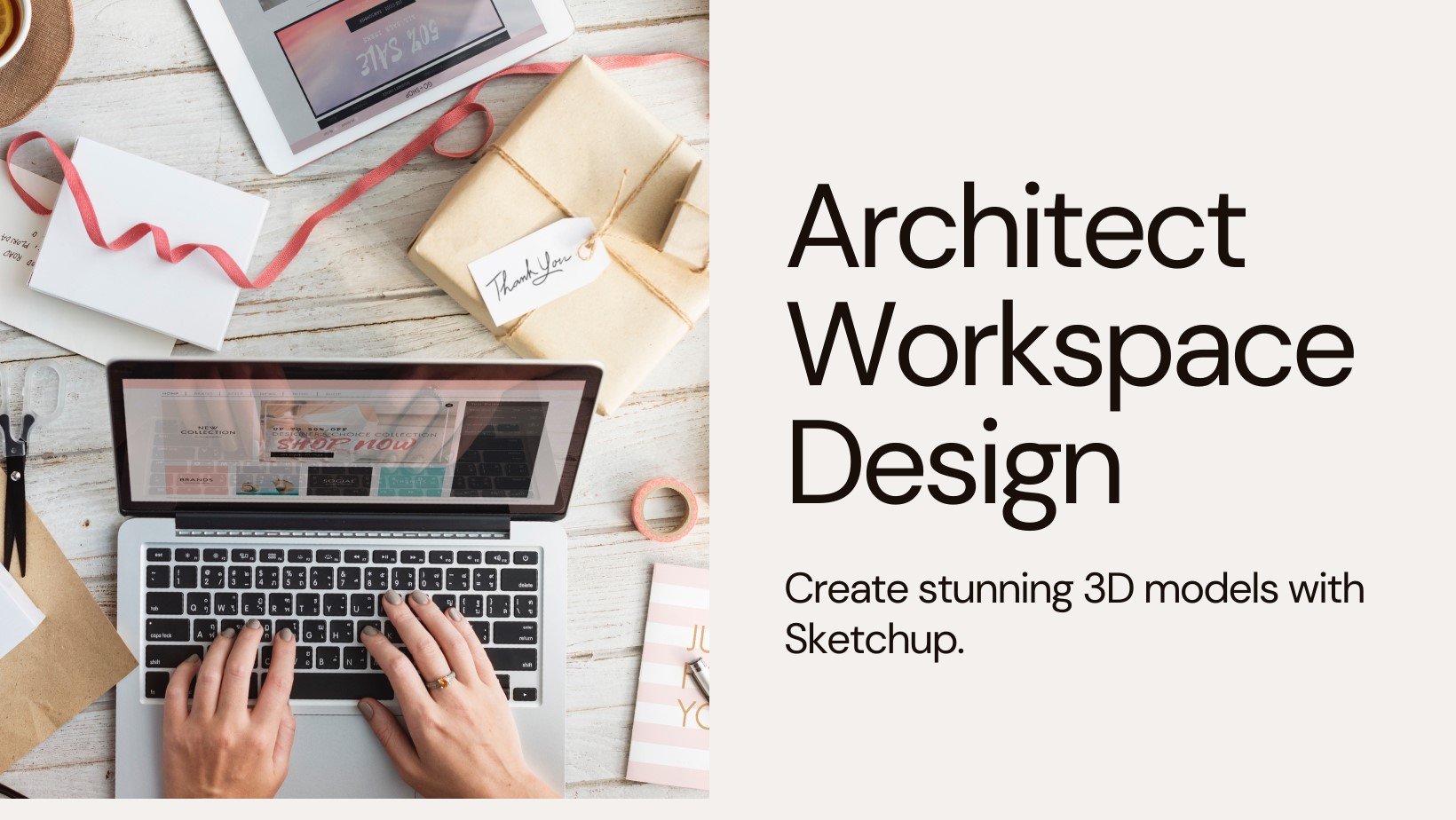Why You Should Start Using Sketchup Today
Introduction
As an architect, you're constantly juggling complex design demands of clients and tight deadlines. Wouldn't having a tool that streamlines your workflow and helps you communicate your ideas more effectively to clients be amazing? The solution is SketchUp, a powerful 3D modeling software that is becoming popular in the architectural industry. In this blog post, we'll explore the benefits of using Sketchup for architects and how it smoothens into your workflow. Sonikport 3D is the perfect partner to guide you in maximizing the potential of architectural visualization.
Traditional design tools, while powerful, can sometimes feel cumbersome because they slow down the iterative process and make it difficult to convey complex spatial ideas to clients. SketchUp helps architects to design faster and present their visions with stunning clarity. Here’s how!
Key Advantages of SketchUp for Architects
Intuitive 3D Modeling
User-friendly interface is the core benefit of SketchUp. Unlike complex CAD software, it has a shorter learning curve and will allow you to focus on your design ideas rather than wrestle with the tool itself. Its push/pull tools and intuitive drawing functions make it exceptionally easy to turn your concepts into detailed 3D models.
Rapid Iterations
The beauty of SketchUp lies in its ability to facilitate swift changes. Whether it's feedback from a client, a new design direction, or simply exploring options, SketchUp lets you modify your models with incredible speed. This fluidity helps improve design outcomes and promote greater collaboration with your team and clients.
Powerful Architectural Visualization
SketchUp, for architects, excels in translating designs into compelling visuals. It has photorealistic 3D interior rendering capabilities within the software and through plugins. You can create stunning images and walkthroughs using it. Instead of struggling with technical drawings, the client can imagine the space, which leads to better understanding and informed decision-making.
Integrating SketchUp into Your Workflow
Compatibility
Sketchup works smoothly with others! It supports importing and exporting various file formats (DWG, DXF, OBJ, etc.), making integrating with your existing CAD workflows easy. A vast library of plugins extends its functionality from terrain modeling to energy analysis.
Collaboration
SketchUp has cloud-based features, like Trimble Connect, which facilitate real-time collaboration. You can share models, manage revisions, coordinate with team members and consultants from anywhere, and make our process smoother.
Getting Started with SketchUp
Resources
Luckily, there are plenty of learning materials available for SketchUp. Here are a few great places to start:
○ Official SketchUp Website: They have a dedicated learning section with tutorials and a helpful community forum.
○ YouTube Channels: Search for popular channels dedicated to SketchUp for architects, offering tips and project walkthroughs.
○ Online Courses: Platforms like Udemy or Skillshare offer structured courses, some specifically for architectural use cases.
Trial Version
The best way to see if SketchUp is a good fit is to try it! Download the trial version and experiment with the tools.
Hardware Requirements for SketchUp
Minimum Hardware Requirements
● Processor (CPU): 1 GHz processor (2+ GHz recommended)
● RAM: 4GB (8GB+ recommended)
● Hard Drive Space: 1.5 GB of available space (2GB+ recommended)
● Graphics Card (GPU):
○ A dedicated/discrete graphics card with at least 512MB of memory
○ Support for hardware acceleration and OpenGL 3.1 or higher
Recommended Hardware Specifications
● Processor (CPU): 2.1+ GHz processor or a current-generation Apple M1 processor
● RAM: 8GB+
● Hard Drive Space: 2GB+ of available space (SSD drives are ideal for faster load times)
● Graphics Card (GPU):
○ A dedicated/discrete graphics card with at least 1GB+ of memory
○ Support for hardware acceleration and OpenGL 3.1 or higher
Important Notes
● Check for Updates: Graphics card drivers can greatly impact SketchUp's performance. Make sure your drivers are up-to-date. You can find updated information on the manufacturer's website, such as NVIDIA or AMD.
● Intel Integrated Graphics: SketchUp can technically run with Intel integrated graphics, but the experience may be less than optimal with potential lags or glitches.
● Beyond the Basics: SketchUp can run on moderate hardware. But if you are going to work with complex models or use 3D interior rendering plugins, invest in a more powerful system. It will significantly improve your workflow.
Where to find the official source?
The official SketchUp Help Center provides the most up-to-date system requirements. You can find it here:
Challenges You may Face
Performance Issues with Complex Models
Challenge
SketchUp can start to slow down as your models increase in size and complexity, especially when dealing with intricate details and imported components.
Solutions
Optimize Geometry: Simplify models where possible by reducing-edge and face counts.
Layers and Outliner: Organize your models using layers and the Outliner for better management. Turn off the visibility of layers you're not actively working on.
Hide Unnecessary Components: Hide components and groups not in immediate use.
Upgrade Hardware: Consider investing in a more powerful computer with a faster processor, more RAM, and a better graphics card.
Precision and Accuracy Challenges
Challenge
SketchUp can sometimes make achieving precise measurements or maintaining exact geometric relationships difficult.
Solutions
Keyboard Input: Use the Measurements box to input distances and angles precisely.
Guides and Inference System: Use SketchUp's guides and inference engine to snap accurately to points, edges, and faces.
Plugins: Utilize plugins that enhance precision tools.
Limitations with Curvilinear Forms
Challenge
Creating smooth and organic can be tricky in SketchUp, as it primarily works with straight edges and polygons.
Solutions
Increase Circle/Arc Segments: Increase the number of segments in circles and arcs for smoother curves.
Plugins: Explore plugins specifically designed for curvilinear modeling (e.g., Bezier curves, SubD modeling tools).
Sandbox Tools: Use the Sandbox tools for sculpting terrain and some organic forms.
Interoperability Issues
Challenge
Importing and exporting file formats between SketchUp and other CAD/BIM software can lead to issues, loss of detail, or unexpected geometry changes.
Solutions
Know Your Formats: Research the best file formats for seamless exchange between specific programs.
Clean Models: Ensure your SketchUp models are well organized and free of errors before exporting
Plugins: Look into plugins specializing in file conversion and optimization for specific software workflows.
Why Sonikport.com is Your Ideal SketchUp Partner
At Sonikport 3D, we're not just SketchUp users but experts dedicated to architectural visualization. Our team has years of experience translating architectural designs into 3D models and photorealistic 3D interior rendering.
Consultations: Need guidance on optimizing your SketchUp for architects workflow or want to explore advanced features? We offer personalized consultations.
Conclusion
Sketchup offers architects a blend of power and simplicity. Its intuitive modeling tools accelerate your design process and allow you to explore ideas quickly. With its 3D interior rendering capabilities, you can translate those ideas into stunning visuals that captivate clients and stakeholders.
If you're ready to see how SketchUp can transform your architectural practice, Sonikport 3D is here to help. Let's schedule a free consultation to discuss your specific needs and how we can help you achieve your goals. You can also explore our portfolio to see the possibilities firsthand.



